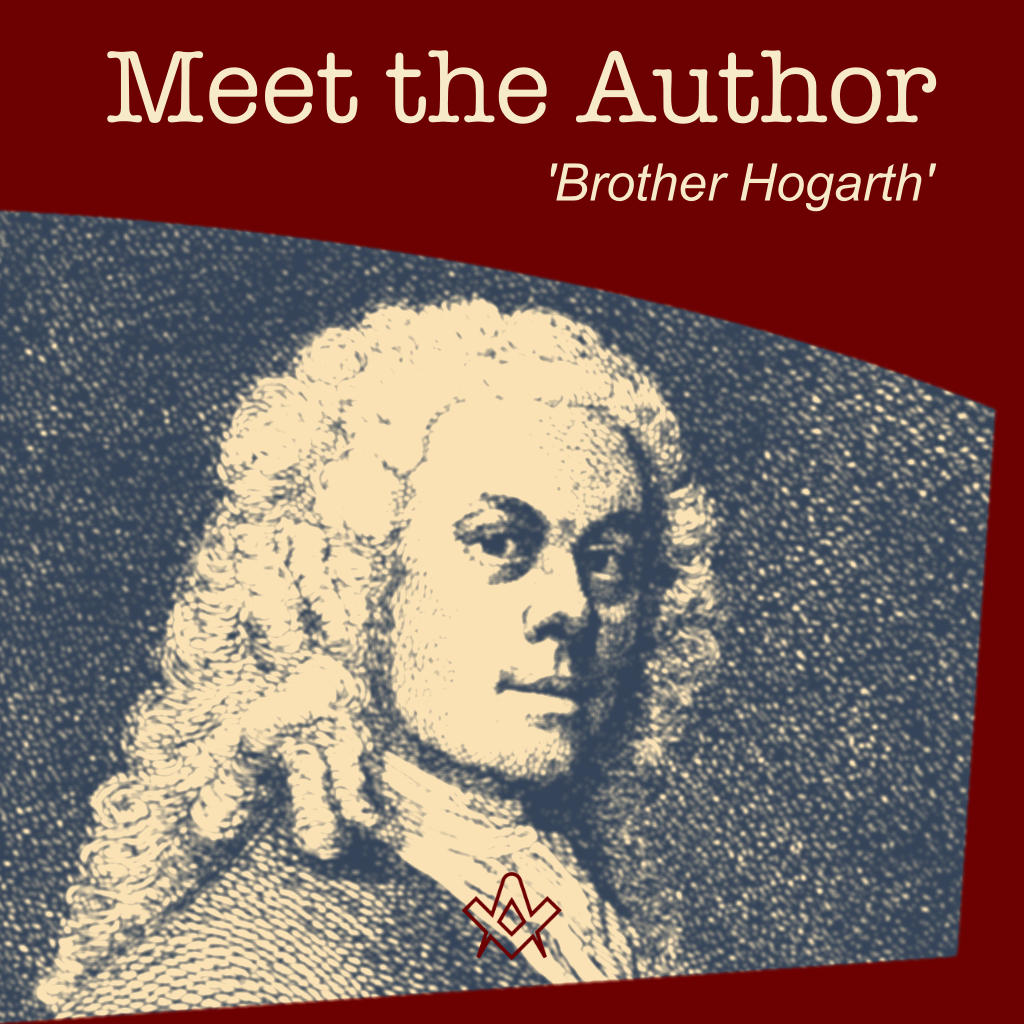‘Brother Hogarth’ who is currently writing a series of articles featuring the Masonic art of William Hogarth.
Each one with focus on a single painting of Masonic interest. This month publish is Scene 3 of A Harlot’s Progress.
We asked the author how he got into Freemasonry…
BH: My Masonic journey is a rather unconventional one! When I was a boy, my grandfather told me that one day I should become a Freemason.
He had been Master of his lodge (Lord Elgin’s Lodge) in Scotland, and had been disappointed that his son (my father) had not joined the Craft.
Here is a picture of him in his regalia.
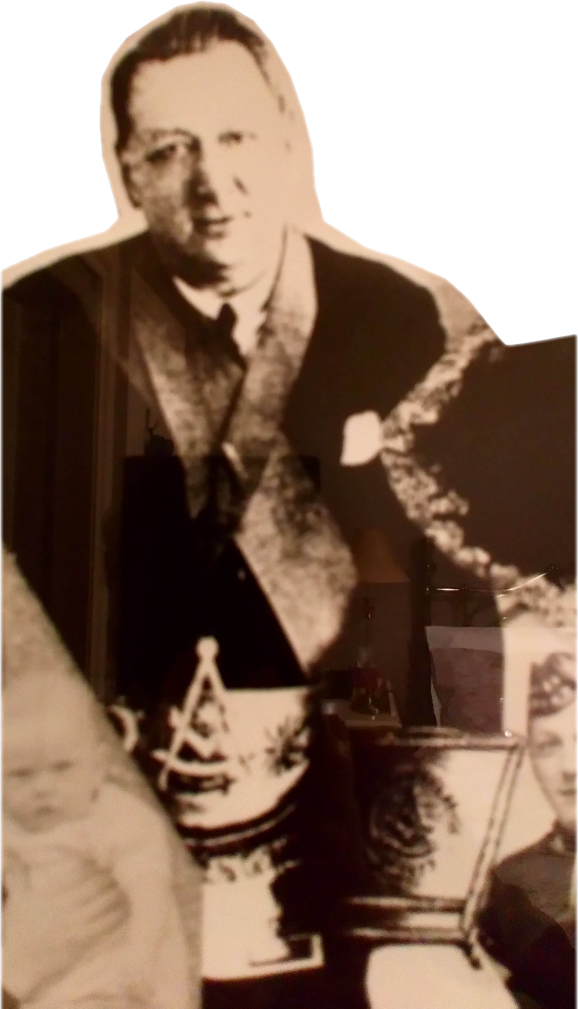
My Grandfather as Master of his Lodge
On his deathbed, he called me over and showed me the Mason’s handshake. He told me that when I was 18 I should give this handshake to a Freemason.
I remember my father asking me what the handshake was, but I kept it a secret from him for the next 10 years. It was an empowering moment for it made me feel somewhat independent of my own father.
When I was attending University in Edinburgh, I was walking along ‘The Royal Mile’ when I saw the Square and Compass sign over a doorway.
As I looked up at the sign, a man unlocked the door and went in. I asked him if he was a Mason, and then told him my tale.
I showed him the handshake that I had been keeping a secret for all these years. He smiled and told me to come back later that evening.
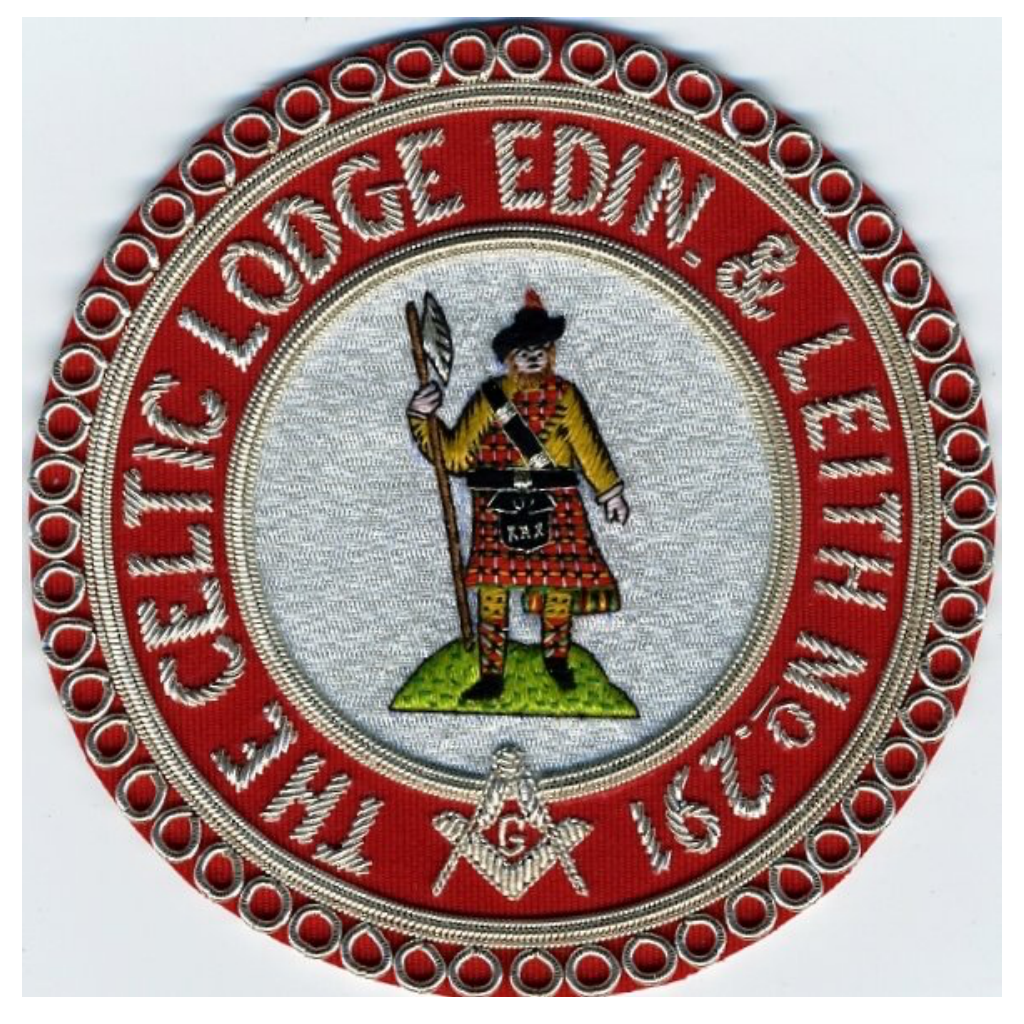
Celtic Lodge No. 291 insignia
That night I was taken into the foyer of the Celtic Lodge, #291. I gave the handshake to a dozen older men who had heard my story.
Eventually one of them told me that my grandfather was a very clever man. ‘What he gave you is not the Mason’s handshake’, he laughed, ‘but it has brought you here, and my brothers have decided that we can make you a Freemason here. Return next week.’
That was how I found my Mother Lodge.
Ed: You are now based in America. How did you get connected with Freemasonry there.
BH: When I emigrated to the States, I thought I would never again ‘meet on the level’. I had no idea that Freemasonry was so strong across the Atlantic.
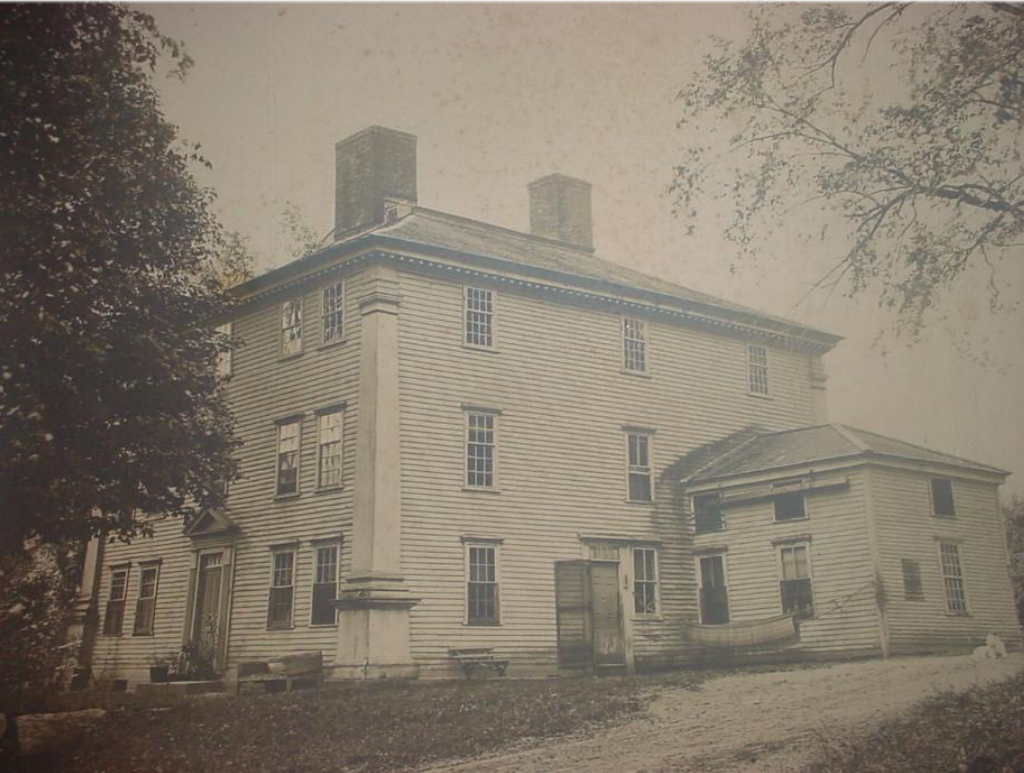
Old photo of my home – Kendall Tavern
I bought an old colonial tavern outside the city of Boston, Massachusetts. I noticed that a black car passed my house several times a week to pick up my neighbour.
One day I stopped the driver to ask about this neighbour of mine. He announced with some sense of pride that his passenger was the ‘third most powerful Freemason in the world!’
In time, I became great friends with the Grand Master of the Grand Lodge of Massachusetts, MW Donald Gardener Hicks.
He asked me to bagpipe him into a quarterly meeting and made me his Grand Lodge Piper.
The Grand Master wanted to hold an extraordinary Grand Lodge meeting in my home. The Tavern had a ballroom that had been used as a Masonic Lodge in the late 1700s. The columns were still in the attic.

The Ballroom (with shutters)
Several of the brethren known as ‘The Colonial Craftsmen’ attended the meeting, dressed in 18th century clothing. We opened the Lodge by candlelight. It was all quite magical!
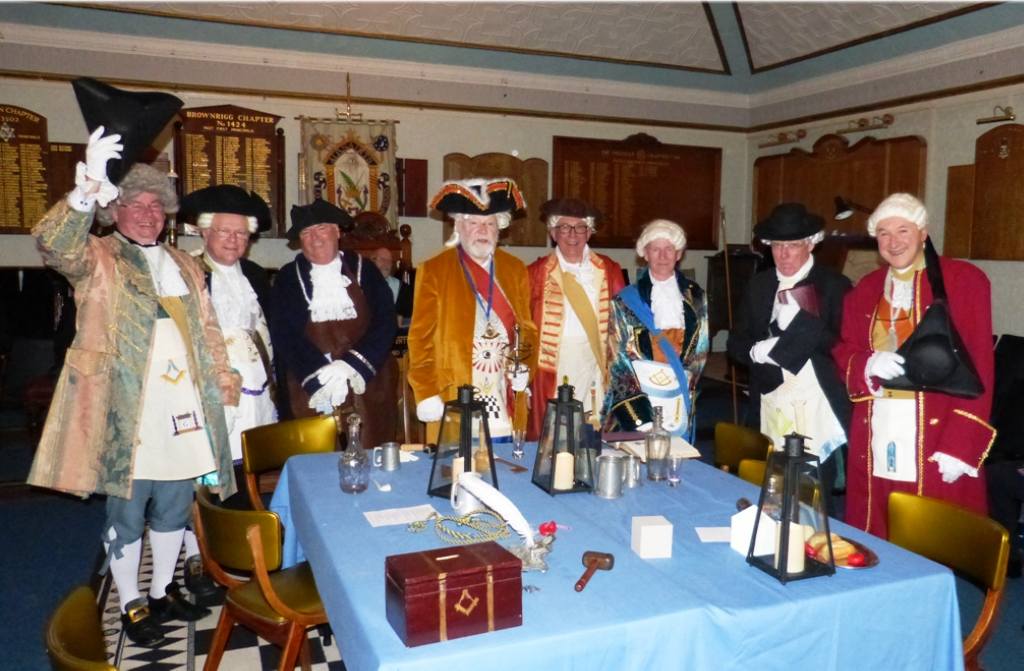
‘The Colonial Craftsmen’
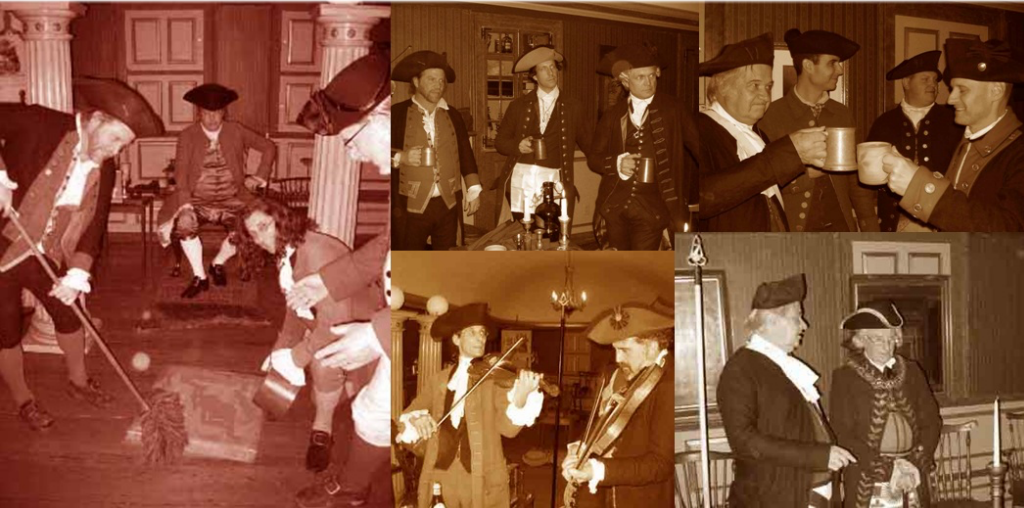
Re-enacting the Degree in the Ballroom.
I started to research 18th century ritual, and received a dispensation to put two of my friends through their first two degrees in my home! It was customary to do two degrees in one night back then.
Everyone was in costume, and we sang Masonic songs and drank rum punch.
We chalked up the signs on the floor and made the candidates rub them out with a mop, just as would have done in those days.
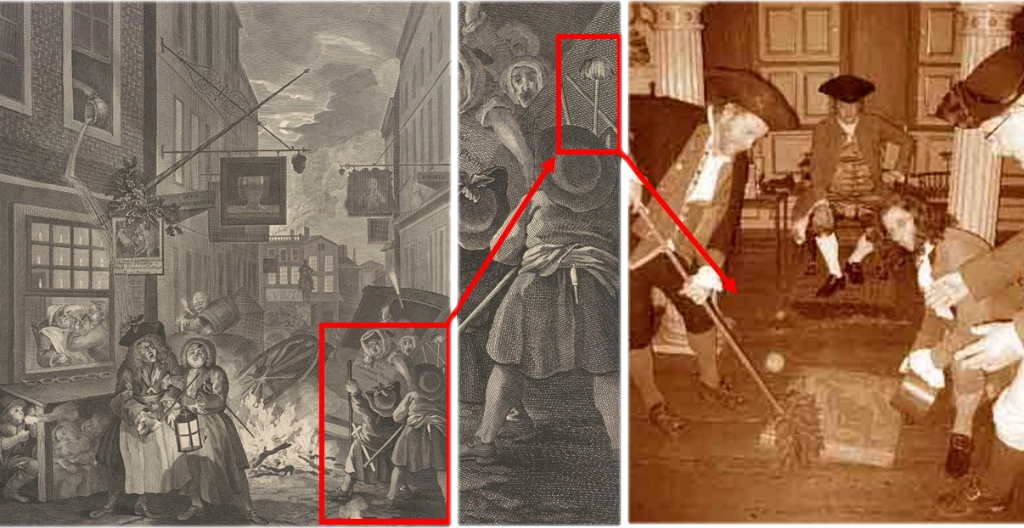
Hogarth’s ‘Night’ (left) and the ‘Mop boys’ re-enacting cleaning chalk marks from the floor of the lodge.
ED: That’s fascinating, I can imagine this goes down well in America.
BH: Yes, Masons are great fun in America. I wrote a review of the evening for the Grand Lodge’s monthly magazine – ‘The Trowel’. I was asked to recreate this evening of 18th century Freemasonry at other lodges. It has now become a bit of after-dinner theatre, which I perform several times a year in different lodges.
I wear my 18th century clothes and talk about Freemasonry in colonial times. Ben Franklin (who was a Grand Master himself), actually wrote a few Masonic drinking songs which I sing. I teach the brethren the chorus, and I accompany them on a concertina.

Brother Hogarth doing a slide show (left), and brethren ‘singing the rum song’ (right)
Brother Franklin actually wrote a ‘Hymn to Rum Punch’. I fill a punch bowl with Gosling’s Rum and Ginger Beer and ladle out ‘Dark ‘n Stormies’ – so delicious, and historic!
ED: Sounds great fun, but there is an important educational angle here.
BH: Yes, Freemasonry in the 18th century is a very entertaining subject to present. The development of the Premier Grand Lodge is fascinating. That is what my research is all about.
Ed: Can you recommend any specific reading material?
BH: I would recommend two books by Richard Berman: Foundations of Modern Freemasonry and Schism: The Battle that Forged Freemasonry.
My book, William Hogarth – A Freemason’s Harlot tells this story of the development of Modern Freemasonry through the eyes of the artist (and Grand Lodge Freemason) William Hogarth.
It is available from my website www.brotherhogarth.com
ED: Speaking of which, you have yet to submit your next blog (Hogarth’s Harlot Reveals All) concerning scene 4 of A Harlot’s Progress. We are looking forward to continuing the famous series of prints, and I had no idea that it contained signs, passwords and knocks from the first degrees.
BH: True. Thanks for giving me this opportunity to present these discoveries to the world. I have been reader of The Square for decades, it is so wonderful to read it digitally, and now I am contributor!
ED: Thank you, Brother Hogarth!
Article images from Brother Hogarth’s private collection. Feature image of Hogarth public domain.
Check out the books of Brother Hogarth (aka Jeremy Bell) here:
Article by: Philippa Lee. Editor

Philippa Lee (writes as Philippa Faulks) is the author of eight books, an editor and researcher.
Philippa was initiated into the Honourable Fraternity of Ancient Freemasons (HFAF) in 2014.
Her specialism is ancient Egypt, Freemasonry, comparative religions and social history. She has several books in progress on the subject of ancient and modern Egypt. Selection of Books Online at Amazon
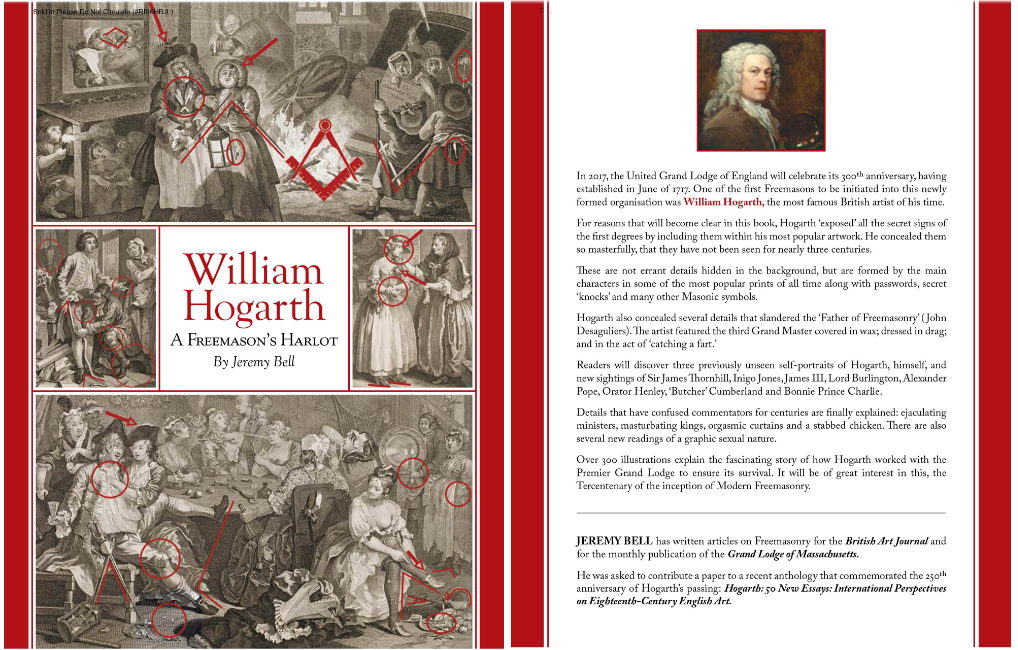
Many more details from the other scenes are explained in my book William Hogarth - A Freemason’s Harlot which is available from my website www.brotherhogarth.com.
Email me at Brotherhogarth@gmail.com. I can show you how many of Hogarth’s other works were Masonically themed.
Recent Articles: by Brother Hogarth
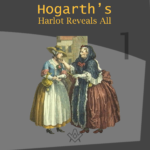 Hogarth’s Harlot Reveals All - Part 1 A new series looking at the hidden Masonic symbolism within Brother Hogarth's works - what can you find? |
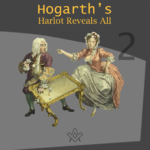 Hogarth’s Harlot Reveals All - Part 2 The second instalment in the series looking at the hidden Masonic symbolism within Brother Hogarth's works - what can you find? |
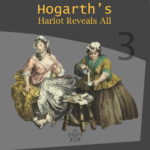 Hogarth’s Harlot Reveals All - Part 3 Brother Hogarth gives us another bawdy glimpse into the salacious world of the 'Harlot's Progress', and the tantalising Masonic symbolism hidden within! Can you spot the clues? |
 Hogarth’s Harlot Reveals All - Part 4 This month we find her in prison doing forced labour. So why, you may ask, is she dressed so finely? This sudden change of costume confused many commentators over the centuries. |
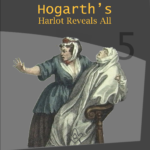 Hogarth’s Harlot Reveals All - Part 5 In last month’s instalment, our Harlot is found in prison doing forced labour. In this instalment the Harlot dies! |
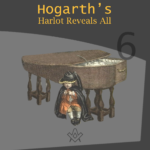 Hogarth’s Harlot Reveals All - Part 6 With our protagonist (the Harlot) lying in her casket, what next for the Widow's Son? |
 Hogarth's Harlot Reveals All - Part 6.2 A naughty clergyman, the virgin, and 'Father Time' - what can Hogarth reveal now?! |
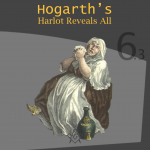 Hogarth's Harlot Reveals All - Part 6.3 Who are the famous men featured in the scene? Hogarth reveals all! |
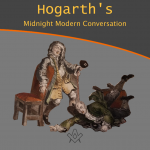 Hogarth's Midnight Modern Conversation Brother Hogarth is back with a look at another work of art with Masonic symbolism 'hidden in plain view' - what is occurring within the Midnight Modern Conversation? |
 Hogarth discreetly embeds more masonic signs and symbols in his paintings , never forgetting, everything he included in his scenes had meaning and is there for a reason. |
 Hogarth discreetly embeds more masonic signs and symbols in A Rake’s Progress, never forgetting, everything he included in his scenes had meaning and is there for a reason. |
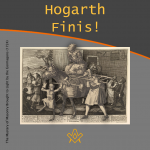 For twelve months Hogarth and his Harlot have revealed all, and the Rake has exposed himself. In this, the last part of the series (for now), we get a final glimpse at a few more of Hogarth's Masonic 'reveals'. |
Recent Articles: in meet the author series
 Meet The Author - Albert Mackey As a contributor to the literature and science of Freemasonry, Doctor Mackey's labours have been more extensive than those of any other in America or in Europe. |
 Philippa Lee talks Masonry and metaphysics with Ben Zion, the author of two must-have books on esoteric Freemasonry. |
 Meet The Author - Robert Freke Gould A brief look at his life, Gould was a soldier, barrister and prominent Freemason and Masonic historian. He was also one of the founders of Quatuor Coronati Lodge in 1886 |
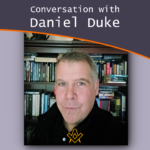 In Conversation with…Daniel Duke Author Daniel Duke talks to Philippa Lee about his new book 'Secret History of the Wild, Wild West' the third in a series on Outlaws, secret societies and hidden treasure. Dan is the great-great grandson of the infamous Jesse James, and the definitive authority on the subject. |
 Mike's Masonic Walks and Talks Mike Neville offers walks and talks primarily around London, based on his vast knowledge of the area and his specialist subjects, which cover all aspects of Masonic history, and some unique insight into the more shady side of 'Crime and the Craft'. |
 Darren Lorente-Bull is the author of 'The Other Brotherhood: When Freemasonry Crossed the English Channel' and five other books. Here he talks to Philippa Lee about his beliefs, his Freemasonry, and books. |
 Meet The Author - Angel Millar This month I am delighted to interview Angel Millar – author of five books on Freemasonry, esotericism, and world spiritual and initiatory traditions. |
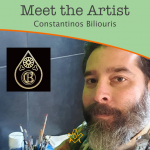 Constantinos Biliouris is a Greek Artist and brother from the Grand Lodge of Greece who creates a range of hand painted masonic aprons. |
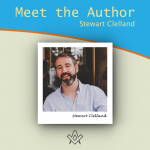 This month Editor Philippa Lee meets Stewart Clelland the author / translator of The Green Book of The Élus Coëns |
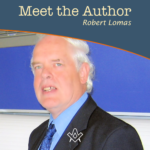 Editor Philippa Lee interviews well-known Masonic author Dr Robert Lomas |
 This month we feature ten of our recommended Masonic authors ranging from the early 1900s to the modern day, and we offer our 'Square choice' of their books. |
 We talk with ‘Brother Hogarth’ who is currently writing a series of articles featuring the Masonic art of William Hogarth. |
 If you would like your work to be featured in The Square, please take a look at our submissions guidelines and send any ideas or contributions to the Editor for our consideration. |
 A slight deviation from our usual 'Meet the Author' theme but equally as interesting, we have a 'Portrait of an Artist' - Travis Simpkins - the man capturing the likeness of Freemasons worldwide! |
 This month we Meet the Author: historian and biographer Kevin Shillington. |
 This month in 'Meet the Author' we look at the life and work of Carl H. Claudy, a prolific Masonic author who believed that Masonic education is the foundation for the Fraternity. |
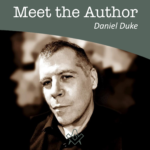 Daniel Duke, the great-great grandson of Jesse James, grew up surrounded by stories of lost outlaw treasures. |
 Stephen Dafoe - numerous books on the Knights Templar, and Morgan: The Scandal That Shook Freemasonry. |
 Paul Sparks – author of A Guide for the Masonic Treasurer |
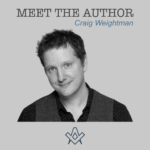 Craig Weightman – author of A Journey in Stone |
masonic knowledge
to be a better citizen of the world
share the square with two brothers

click image to open email app on mobile device



